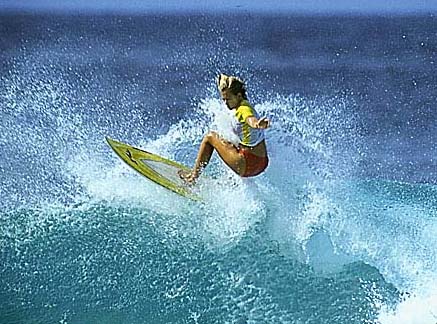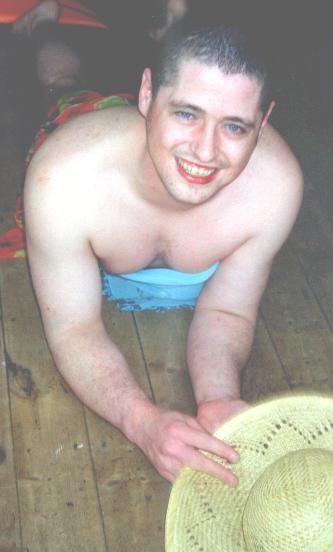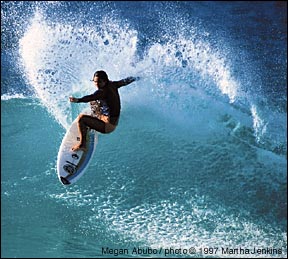THE BIKINI ISSUE
Theoretical Background
Re-Constructing the Stereotype: Images of Women Surfers
This page is an overview of feminist and
cultural theories that put my argument
in perspective. Barthes’ work on images
suggests that meanings are
produced through the codes at work in representations.
Whilst meanings might
appear to be natural or obvious, they are
in fact produced: they are
constructed through the processes of signification at work in all representations.
It is important to understand how and
why representations come to have meaning and
appear to be ‘real’. For example, surfing
magazines consistently represent women
as buxom, bikinied, blondes. Although
we may know that such images do not
correspond to the experience of most women
surfers, nevertheless the image
defines what many people think of as women
surfers. Betteron argues that it
can do so because such images draw upon and
re-present already familiar values
and attitudes which appear to be true.
“The image defines femininity in ways
which are perceived as actually existing”
(Betteron, 1978:22)
Feminism attempts to find new ways of representing
women's experience
which challenge or subvert the cultural forms
in which women are defined as
subordinate. The
Bikini Issue is concerned with producing
positive images of
women in defiance of the dominant constructions
of femininity in out culture.
The project aims to deconstruct the assumption
that women, when they are surfers,
are taking on a male activity and must be
labelled accordingly.

How do we currently define the gender
categories of 'men' and 'women'?
Gender has come to be thought of not
as essentially given, but as socially and
culturally constructed, not as hierarchical
and fixed, but as equitable and fluid.
The Bikini Issue
plays with the notion of gender. In an attempt to redefine
gender, the project addresses a female spectator:
presenting the male body as
object whilst the images of women are action
shots.
 Model: Joe
Model: Joe








